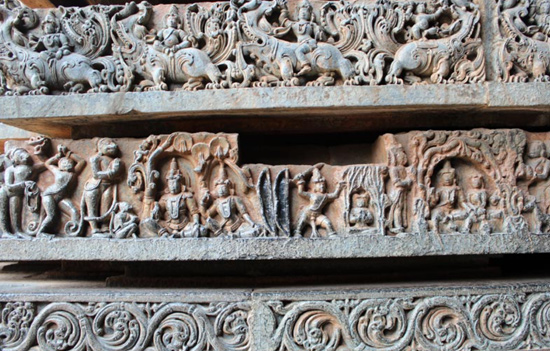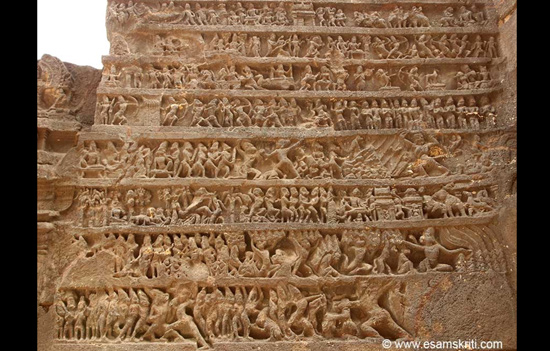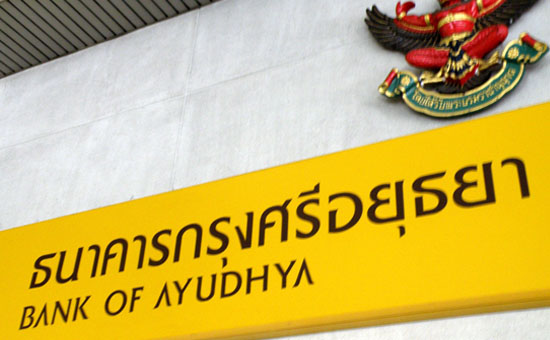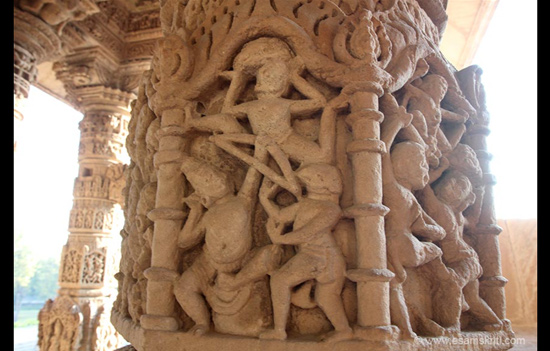- Author tells about destruction of numerous temples, why it is important to re-make Hindu temples and examples of the presence of Ramayana across countries of Southeast Asia and Far East.
Bhagwan RAM whom the world including Indians revere,
returns to the holy city of Ayodhya after 500 years.
Hindu Mandirs, rebuilt and destroyed as
many times
Despite historians and some terming Shri Ram a
mythical character, and researchers disputing Ayodhya as the birth place of
Shri Ram, Hindus never lost faith in their Shastras, never got disillusioned by
the theories competing to prove Shri Ram’s existence or the time line of Hindu
Dharm, Vedas, Shri Ram and Shri Krishna.
The Islamists demolished the birthplace of Shri Ram,
the Ramkot fortress at the city of Ayodhya, and constructed mosque with three
domes in its place specifically because it was venerated by the Hindus. However,
Hindus did not abandon their pilgrimage city and made continuous efforts to
recover it since the destruction of Ram Mandir in 1528. The worship continued,
so did the fight till it was freed on 9 November 2019.
Ram Mandir may be the first legal case won against the Islamic occupation of Hindu Mandirs, but Hindu resistance to protect and restore their Mandirs was uninterrupted through centuries. Destroyed Mandirs were rebuilt by Hindus again and again for e.g. Somnath.
Right from the invasion of the sea coast of Sindh
province in the seventh century, the Muslim aggressors extensively destroyed
thousands of Hindu Mandirs from Sistan, Samarkand, Debal, Multan to Ayodhya,
Mathura, Kashi, Madurai. They looted valuables, broke the Vigrahas and
plastered them into steps of their palaces and Masjids.
When Somnath Mandir was attacked and Hindus left without
a sufficiently equipped army, they gathered in defence of the Mandir on one
call of the main Purohit of Somnath ji Over fifty thousand Hindus fought
ferociously by day and night. Mahmood of Ghazni could enter the Sanctum only
after the last Hindu fell.
Many Mosques in Bharat are standing on erstwhile Hindu
Mandirs, Babri masjid on Ram Mandir,
Shahi Idgah on Krishna Janm bhoomi Mathura, Gyan Vapi on Kashi Vishwanath,
being a few important Mandirs of Hindu faith, remnants of which are clearly visible
even today.
Album Rudra Mahalaya Mandir, Sidhpur nearly got converted
into a mosque
Album Hindu/Jain temple became Adhai Din ka Jhonpra Ajmer
mosque
Album Hindu temples converted into mosques
Read Pre-sultanate history of Qutub Complex
Hindus rebuilt their Mandirs many times but never
destroyed the Masjids built over them. Instead of wiping the existence of all
Masjids built upon the Mandirs, some Rajas permitted the Muslim traders to
build new ones on re-conquered lands. The Vaghela dynasty for instance,
permitted building Masjids at Patan, Bharuch, Khambhat, Asaval, Junagadh,
Kutch, one just in front of the Somnath Mandir and bestowed an allowance for
its maintenance.
Allauddin Khilji payed back the Vaghela’s religious tolerance by tearing down hundreds of mandirs and outdoing what Ghazni did to Somnath. He carried the Shiva Linga to Delhi and fitted it into a pedestal in a Masjid. Hindu Mandirs that rose again with re establishment of Hindu power, were ravaged again by Ahmad Shah. The Hindus rebuilt the Mandir many times but the Muslims destroyed it as many times and built taller and huger Masjids. So also Hari Mandir or Golden Temple was destroyed and re-built many times.
After 500 long years, and in the courts since 1800s, the Supreme Court freed Ram Janm Bhoomi of the Babri Masjid. The Court ordered the Hindus to give five acres of land for building a mosque 20 km from the Ram Mandir site is being built. It is expected to be the largest mosque in India. Are Hindus preparing for history to repeat itself!
 Left of pic are monkeys, Hanuman, Ram and Laxman. Right of pic are Sri Ram and Sita in a hut. Halebidu Temple Karnataka.
Left of pic are monkeys, Hanuman, Ram and Laxman. Right of pic are Sri Ram and Sita in a hut. Halebidu Temple Karnataka.
The Importance of Preserving Hindu
Mandirs
The Ancient Greek, Chinese, Egyptian, Mesopotamian, Mayan civilizations have long gone, but the Hindus survived all aggression and prevailed because of their unshakable faith in Dharma and Shastras. The fight for reclaiming our Mandirs is not a fight for some ‘disputed lands’, it the fight for our right to protect and free the sacred sites of the faith of this Land. The Rishis and Sants identified powerful sites and established Mandirs, the kshetra where Devi Devtas had been worshipped for thousands of years, to bring humans into direct communion with God.
“Even Gods sing praises and wish to be take rebirth in Bharatvarsha where conditions to attain salvation are most conducive.” - Vishnu Puran, 2.3.24.
Unlike the history of other nations, the history of
Bharat has a consistent and unbroken record that goes back to the creation of
the planet earth and is documented period wise namely Parardh, Kalp, Manvantra
and Yuga in the Scriptures. Among the seven celestial abodes called Lokas, the celestial Bhu Loka has seven
divisions called Dvipa, the smallest
amongst them being Jambu Dvipa which has
nine sections called Varsha. One of them
is the earth planet called Bharat Varsha.
The records of the Hindu history are so profound that to
date Hindus cite their exact location in the Sankalp shloka- ‘भूर्लोके जम्बूद्वीपे, भारत वर्षे, भरत खंडे, आर्यावर्तान्तर्गतैकदेशे, and register the exact time of the auspicious event…श्री श्वेत वाराह कल्पै, वैवस्वत मन्वन्तरे, अष्टाविंशतितमे युगे कलियुगे कलि प्रथमचरणे…अमुक स्थाने..अमुक संवत्सरे..अमुक अयने ..अमुक ऋतौ…अमुक मासे…अमुक पक्षे…अमुक तिथौ….अमुक वासरे…अमुक समय..
According to the Puranas, Bhartiya civilization remained
unbroken since the current day of Brahma that started 1972 million years ago.
The descension of God happened many times in a Kalpa (one day of Brahma that has 14 Manvantras, each having 71
cycles of 4 Yugas). In each Manvantra, the divine Manu becomes the originator
of human civilization, the present Manu is called Vaivaswat. This is the seventh Manvantra in which Shri Ram
descended on the earth at the end of the 24th Treta Yuga.
“Shri Ram was born in the Treta Yuga in Ayodhya Nagari also called Saket, the capital of Suryavanshi Rajas of Kausal Janpad (since Satayuga). Ayodhya was so called because of its unconquerable fort surrounded with deep trenches, ‘कोटखाई’, Maharshi Valmiki called it ‘दुर्ग गंभीर परिखां”. - Mein Ramvanshi hoon, Manoj Singh, pg. 128
 Panel in Kailasa Temple Ellora depicts Ramayana.
Panel in Kailasa Temple Ellora depicts Ramayana.
Ramayana went GLOBAL
The Mul Ramayan is attributed to Narad ji who passed
it to Maharshi Valmiki who authored the present and oldest available version of
Ramayan. Brahma ji in the Valmiki Ramayana says that as long as the mountains
and the rivers exist on the earth, the story of Rama will also be preached in
the world. The world has over 300 versions of Ramayan.
Read Ramayan in Southeast Asia – a cultural bridge
Read Many versions of the Ramayana
The languages, scripts, literatures, calendars,
beliefs system, worship of Shri Ram, Shri Krishna, other Hindu Devi Devtas, and
their artistic aspects of the countries of Southeast Asia have much in common
with Bharat.
 Sukumwit street Bangkok has a Bank of Ayudhya (or
Ayodhya) whose symbol is Garuda, the vehicle of Lord Vishnu.
Sukumwit street Bangkok has a Bank of Ayudhya (or
Ayodhya) whose symbol is Garuda, the vehicle of Lord Vishnu.
Scenes from Ramayan on wall frescoes and terracotta portraits from 700 BC prove Shri Ram’s influence on pre-Greek and pre-Roman Etruscan civilizations. Some of the religious ceremonies in Europe still reflect similarities to those of Hindus.
“Few works of literature produced in any place at any time have been as popular, influential, imitated and successful as the great and ancient Sanskrit epic poem, the Valmiki Ramayana.”-Robert Philip Goldman, Professor of Sanskrit, University of California, Berkeley.
The March of Rama, written in French and produced by
Alexis Martin and Daniel Briere, ran to packed audiences in Montreal, Canada in
April 2007.
It is said that the ‘Richard the lion hearted’ is in fact a recast of Shri Ram’s character and based on a French poem and opera ‘Richard
Coeur de Lion’.
Japanese versions of Ramayan were written during the 10th century as Sambo
Ekotoba and 12th century as Hobutsushu (Jewel Collection), and are known as
Ramaenna or Ramaensho. They have two
dance styles from 8th to 12th century called Bugaku and Gagaku, based on
Bhartiya classical dances for depicting the Japanese Ramayan.
So smitten, by the story of Shri Ram's triumph over the forces of darkness, was the Japanese producer and director Yugo Sako, that he read Valmiki Ramayana in Japanese as well and studied ten different versions to make the most popular award winning animated cartoon on Ramayan.
Muhammad Reza Shah Pahlavi, the Shah of Iran (1941-1979), prided himself as Arya Mihir ‘Sun of the
Aryans’ just like Suryavanshi Sri Ram. The Persians worshipped Sun as Mitra and celebrated ‘Mitra Day' on December 25th, Egyptian pharos followed and worshipped Sun God, Amon on 25th December. Following them were the Romans who celebrated December 25th as Natal Solis Invicti. It is also celebrated as Christmas day!
From 16th to the 19th century, 38 to 90 versions of the
Ramayana were written in Persian. The 16th century Persian translation of the Yoga Vasistha, by Nizam al-Din Panipati is called ‘Jug-Basisth’. Not to forget that the Persians were worshippers of fire/Agni, the protector of humanity, a Devta of the Rigveda.
The Ethiopian prince Haile Selassie I (1930- 1974)
claimed that he was a descendant of Bhagwan Rama through his son Kush, the
father of the Kushites, (quote the Biblical Cush, the son of Ham) and that
their country was called Kusha Dvipa.
A folk version of Ramayan in Kalmyk (subgroup of
Mongolic languages) is found in coastal areas of Volga River. The manuscripts
of C F Glostunky, written in Kalmyk, are preserved in the Siberian branch of Academy of Sciences of the
USSR, the highest scientific institution of the Soviet Union from 1925 to 1991.
Ramayan translated from original Sanskrit to Kalmyk
language was published in Elista, the capital of the Soviet Kalmyk Republic.
Their libraries have seven manuscripts in the old Kalmyk alphabet.
Mongolian writer and linguist, Tsendiin Damdinsuren had compiled Mongolian
versions of Ramayan.
Valmiki Ramayan refers to Sugreev sending his vanaras
to the East in search of Sita via a route where the sun rises first. That happens
to be the present Peru, where they worship Inti
(Sun) in June. There the festival is called Into
Raymi.
The flora and fauna described in the Valmiki Ramayan
is found to be accurate as mentioned in the book, Sri Rama Pada Yatra by
Ramaswami Venbakkam Desika.
Ramleela is performed in about 250 villages of Sri
Lanka. There is an archaeological natural cave in the shape of a cobra in
Sigiriya with paintings on its walls depicting Ma Sita being captured by the
Asuras. Ashok Vatika, Ashoka vana, Sita Kotuwa, Hot-wells of Kanniya buit by
Ravan are some proof of Shri Ram being worshipped in Sri Lanka.
The world’s largest Vishnu temple, Angkor Wat in Cambodia has depictions of Sita’s Agni pariksha, Ram's return to Lanka, killing of Kabandha, Valin and Viradha. Lkhaon, the masked theatre of Cambodia revolves around the story of Ramayan. The 7th century stone inscription at Veal Kantel, Stueng Treng mentions offering of the manuscript of Reamker (Ramayan) to the temple.
Senior journalist Vimla Patil wrote, “Built in several levels, the temple has huge bas-relief sculptures telling the story of the Mahabharat war and the Ramayana war with Ravana. The story of Samudramanthan is repeated here in great detail in bas-relief.”
See pic 9 in Angkor Watt album
What Phar Kaew temple in Thailand
has paintings and statues of the Ramakien (Ramayan). Bimay temple has a lintel
representing Rama and Laksmana tied in Nag pash by Indrajit. The walls and
balustrades of many temples in Thailand host huge sculptures of characters from
Ramayan, they also decorate the courtyard of the Royal palace, the huge
corridors of the palace depict the Ramayan story painting. A huge statue of
Hanuman ji sits on a hillock facing a major Buddhist monastery. The Thai kick
boxing is based on the military skills of Bali and Sugreeva.
Paintings of Emerald Buddha Temple has scenes from
Ramayana, see pic no 21-24
Nat Hlaung Kyaung Vishnu Temple in Bagan, the ancient
city of Myanmar is adorned with sculptures
of Shri Ram and Bhagwan Parashuram. The Stone inscription in the Mon language,
the King Kyanzittha of Bagan dynasty proclaimed that he was a close relative of
Rama of Ayodhya in his previous birth.
Stories of Shri Ram are depicted in the Jataka series
of terra-cotta plaques on the panels of Petlcik Pagoda in Bagan.
Nine literary pieces of Ramayan versions are found in Burma
out of which three are in prose. Ramayan is recomposed as Yama Watthu/ Yama Zatdaw.
The story of Ram is Yamayana, while Zatdaw refers to the acted play or a part
of the tales of Theravada Buddhism.
Phralak Phralam, an adaptation of Ramayana is staged every
alternate night at the Royal Palace Museum theatre in Luang Prabang, Laos. Wat Phu Champasak, a Shiva temple in Laos has
sculptures of Shri Rama, Shri Krishna and other avatars of Vishnu ji.
Several Buddhist monasteries and stupas of Laos have
sculptures depicting Ramayana in stone as well as in wood panels.
 Hanumanji carrying Sanjeevani mountain i.e. a cure for Lakshman. Sun Temple Modhera, Gujarat.
Hanumanji carrying Sanjeevani mountain i.e. a cure for Lakshman. Sun Temple Modhera, Gujarat.
Vietnam was called Nagar Champa, from the 1-16th centuries. The Cham people of
Indonesia occupied the central and southern coast of Vietnam from Neolithic
times and established the kingdom of Champa. Their capital from 7th to the 9th
century was Indrapura/ Tra Kieu. Ram and Krishna are found in the temples that
are predominantly dedicated to Uma Maheshwara.
Read Ambassador of Vietnam performs Rajtilak on characters
of Ramayan
Many ancient inscriptions on Khmer monuments by
numerous rulers written in Sanskrit or Old Cham have been found throughout
Central Vietnam. An inscription from king Isan Varma and Prakasa Dharman times,
gives tribute to Rishi Valmiki.
Prambanan temple in Yogyakarta, central Java depicts
Ramayana on parapets adorned with bas-relief. There is a performance of leather
puppet show of either Ramayana or Mahabharata in the Palace annexure of
Yogjakarta. A two-hour Ramayan Ballet is performed three times a week around
the Prambanan Temple by hundreds of dancers. The sacred Balinese dance called Sanghyang or Chak chak incorporates the
story of Ramayan. Ramayana stories and characters are also painted on the
Balinese houses, restaurants and hotels.
Read about Ramayan panel at Prambanan Temple, Java
Names of Ramayana in Indonesia: In Bali it is called Ramakavaca, in Java it is
called Kakawin Ramayan or Yogesvara Ramayana and in Sumatera it is Ramayan
Swarnadwipa. In Indonesia, verses of Mahabharat or Ramayana in the Javanese
language are inscribed on many tomb stones of the dead.
The version of Ramayan in Malaysia
is called, Hikayat Seri Ram. Malaya people adopted Ramayan to their micro
culture. Raja Dashrath became the great-grandson of the Prophet, Adam and Ravan
receives boons from Allah instead of Brahma and Lakshman is glorified more than
Shri Ram.
The ministers in Malaysia take oath of office in the
name of Shri Ram’s
Paduka ‘Urusan Seri Paduka’ and the president takes his oath the name of the
dhooli/ dust of Shri Ram’s Paduka ‘Urusan Seri Paduka Dhuli’. The government orders for building a masjid has to be issued
in the name of ‘Urusan
Seri Paduka’. Source
The Kiskindha kand of Valmiki Ramayan associates Cinas
& Parama-Cinas with the trans-Himalayan tribes of north of Jambudvipa, that
they were created with some others by Rishi Vashisth through the divine powers
of Nandini.
The presence of Ramayan traditions in China indicate that Shri Ram may be in the racial
memory of the Chinese. The Chinese version of Ramayan in the Yunnan province,
is, Langka Sip Hor. The Chinese epic, ‘Journey to the West’, particularly the character of the legend Sun Wukong (600 AD), is believed to have been based on Hanuman ji. Tales regarding to Ramayan were compiled by Kang Seng Hui in 251 a.d. Translations of Ramayan were done by Kekaya in 472 AD. His Yii Chii wrote a novel, Kapi, on Hanuman in 1600. A Chinese version of dance drama based on Ramayan is also enacted in some parts of China.
Gold images of Garud found in Tabon Caves, the cradle
of Philippine civilization are evidences of
Shri Ram being worshipped in those regions. The Philippine Ramayan is called,
Maradia Lawana and Darangen, and Rajah Mangandiri is another oral tradition
Ramayana of the Southern Philippines. Juan R Francisco discovered a miniature
Ramayan among an ethnic group called the
Maranvas, converted to Islam around 500 yrs back when they were narrating the
story of Maharida Lawana/ Maharaj Ravan at a community gathering. A key
difference being it begins with Ravan praying to Allah and Gibrael and Lakshman
is depicted as the monkey son of Ram and Sita.
Before the arrival of Arabs to Sulu Island in 1450,
the chiefs of most Philippine islands were called Rajas. The script was derived
from Brahmai. There are some documents of 900 CE, inscribed on a copper plate
in Kavi Script- Pali alphabet.
Ramayan is the most adopted scripture in the world. Different cultures have transformed it into a rich source of inspiration for a variety of literary traditions, artistic manifestations and performance styles. The essential spirit of Ramayan and Shri Ram’s character transmitted the Hindu thought, code of conduct, the ideals and wisdom of common life to societies across the world. Even in this contemporary era, stories of Shri Ram remain relevant and prescient.
“It is becoming clearer that a chapter which has a western beginning will have to have an Indian ending if it is not to end in the self-destruction of the human race... the Indian way has the attitude and spirit that can make it possible for the human race to grow together into a single family”.- Arnold Joseph Toynbee, English historian.
Read Ramayanas
of South and South East Asia by Benoy K Behl
Numerous countries in Southeast Asia and Far East are closest culturally to Bharat, revere Shri Ram, follow many of our traditions and customs and have always looked at Bharat for attention. The reclamation of Ram Mandir in Ayodhya and the resurgence of Hindu Dharma has brought them as much happiness as to Hindus worldwide.
The countdown has begun
Brahma ji’s proclamation in Valmiki Ramayan that, “as long as mountains and rivers exist on earth, the story of Rama will also be narrated to the world”, is about to reflect in the Dharmic renaissance of Bharat that shall begin with the inauguration of the Ram Mandir at Ayodhya. Hindus across the world are consumed in a flood of emotion and devotion, that cannot be expressed in any language other than pure Bhakti.
Making of the
Ram Mandir at Ayodhya heralds the Sanatan Renaissance, the first step to the
right of righteousness, the sufferings of Hindus since 1300 plus years will
cease only when they are given equal human rights under the Indian Constitution.
To read all articles by author
Also read
1. Architecture of Ram Mandir
2. What is Pran Pratistha
3. On Chanting the Name of SRI RAM
4. What is the deeper meaning behind the names of Sri
Ram and his brothers
5. Adhyatma
Ramayan marries Bhakti with Advaita Vedanta
6. What is the
concept of God in Christianity and Sanatana Dharma
7. What is
Immaculate Conception
8. Many versions
of the Ramayana
9. A sacred
journey to meet Pandit Ramashraya Tripathi Ji, a present-day disciple in the
lineage of Goswami Tulsi Das
10. Ramayana in Southeast Asia – A cultural bridge